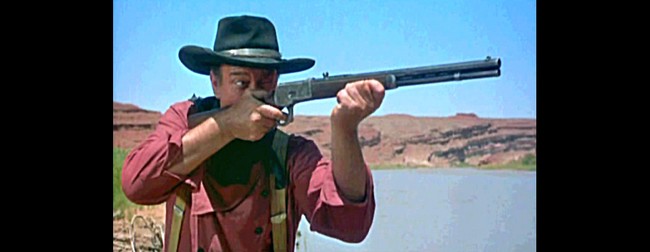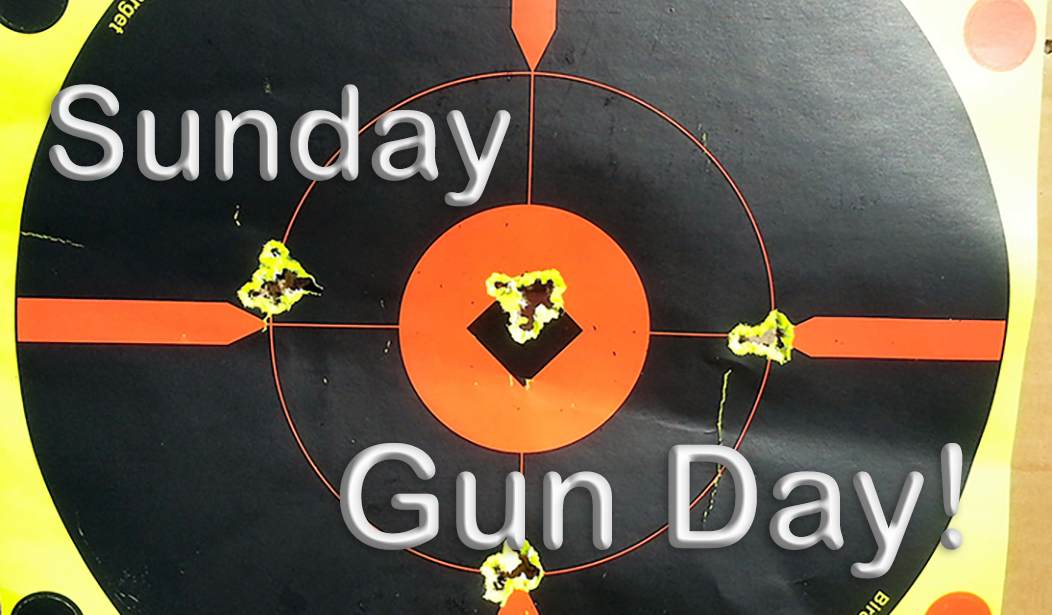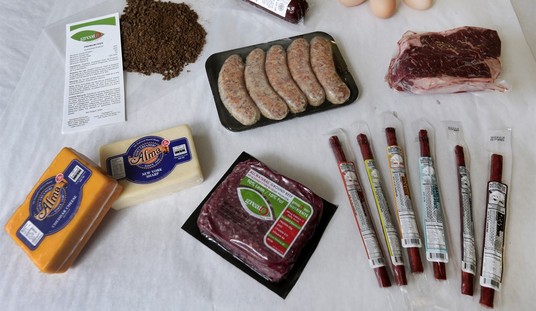Enter John Marlin
While he opened his Marlin Firearms Company in New Haven, Connecticut, in 1870, John Mahlon Marlin didn’t jump into the lever gun or, indeed, even the rifle business right away. Instead, he began by manufacturing inexpensive brass-frame single-shot derringers, initially in .22 caliber and later in .32 and .38 caliber versions. In 1875, he began manufacture of the Ballard single-shot falling-block rifle, eventually building more of that rifle than any of its several other manufacturers.
Eighteen eighty-one saw the first Marlin lever gun. The Model 1881 Marlin was intended to compete directly with Winchester’s 1876 Centennial, and in fact, the Marlin offering did Winchester one better in offering the 1881 in the popular .45-70 and .38-55 chamberings.
Marlin’s first lever gun had that advantage over the Winchester, but this happy situation wouldn’t last; in 1886, Winchester would offer the first in a new generation of lever guns that would also be chambered in popular, easy-to-obtain calibers. Also, the 1881 Marlin was not appreciably different than the Winchester designs; like them, it loaded through a gate in the receiver, had a sealed tubular magazine, an external hammer, and ejected spent cartridges straight out of the top of the action. But the Marlin sold for a few dollars less than comparable Winchester offerings, and this was enough to keep the New Haven plant open until the next innovation.
That next innovation was the Marlin Model 1889, a pistol-caliber lever carbine offered in .44-40, .38-40, .32-20 and .25-20. The carbine in and of itself wasn’t remarkably different than the Winchester 1866 and 1873 guns in its function or capabilities, but it did have one key difference: Its receiver top was solid, and empties were ejected instead out of the right side of the action.
In 1889, not many shooters were mounting telescopic sights at all, let alone in pistol-caliber lever action carbines. But the side ejection, dubbed by the New Haven gunmakers as the “Marlin Safety” action, would become widely known as a Marlin feature, favored by many shooters who disliked the feeling of hot brass landing inside an open shirt collar. In 1894, the pistol-caliber Marlin was reworked somewhat and re-introduced as the Model 1894, which is still in production today.
Two more historic offerings from Marlin saw their origins in the last years of the 19th century. First, in 1891, Marlin brought out the Model 1891, which adapted the side-ejecting lever action to the .22 rimfires, handling the Short, Long, and Long Rifle cartridges. A few reworks of this original rifle resulted in the “Golden” Model 39, a light, handy small-game rifle beloved by shooters and, like the 1894, still in production.
A nice New-Haven manufactured 39 Marlin has been on my “want” list for quite a while, although the right juxtaposition of “rifle for sale” and “available cash” hasn’t yet materialized. The 39 — and the 39A — as made by the New Haven works, is a great piece, light, handy, and quick. Because of Marlin’s signature side-ejection, it is easily scoped, a nice advantage when you’re after small game that presents small targets. To be fair, the .22 offerings from Winchester and Browning in lever guns are also side-ejecting, but the Marlin did it first. Back in the Allamakee County woods of my youth, I used to occasionally bump into an older member of the big Duffy clan who hunted gray squirrels in the tall timber with an ancient Marlin 39 stuffed with .22 shorts; he was a deadly shot, quick and precise, going only for headshots. The Shorts in the long-barreled 39 made little more noise than a dry walnut falling on a rock. He killed a lot of squirrels with that old gun.
But I digress.
In 1893, Marlin came out with their final lever gun of the 19th century. The Model 1893, like the 1889, featured the “Marlin Safety” side-eject action. Offered in cartridges including the .25-36, .30-30, .32 Special, .32-40, and .38-55, the 1893, like the 1889, was a handy, solid rifle that sold for a tad less than Winchester’s offerings but worked just as well. This rifle would, like the 1894, go through several iterations in coming years, becoming in time the famous Model 336 that is still in production, as well as being the basis for the Marlin 444 and 1895 rifles.
In Marlin, Winchester was finally seeing some steady and determined competition in the lever gun market. Marlin, however, wasn’t the only other player.
The Colt-Burgess Rifle
In 1882, the folks at Colt cast some envious gazes on Winchester’s success in rifles and sought to get a piece of that action. To that end, they went to gun designer Anthony Burgess, who had a patent for a lever-action rifle with a toggle-joint action; Colt bought that patent and, in 1883, began production of the Colt-Burgess lever gun in .44-40. Two versions were offered: a carbine with a 20” barrel and a rifle with a 25” barrel.
The Colt-Burgess rifle didn’t catch on. About 6,400 examples were made, mostly in the rifle version. About this time, as we noted in the recent series on six-guns, Winchester had an engineer building a few prototype revolvers; long-standing gun industry rumor has it that the two companies entered into a gentlemen’s agreement wherein Winchester would drop revolver development in return for Colt eschewing the continued manufacture of lever guns. Whether this is true or not, Colt dropped the manufacture of the Colt-Burgess rifle after only two years.
Someone else, though, was a more serious contender.
A Savage Competitor
In 1893, a couple of New Yorkers patented something new: a lever-action rifle with no external hammer, which used a unique rotary-style magazine, allowing it to fire spitzer-type bullets. Further, their patented rifle was specifically designed to handle high-pressure, smokeless powder cartridges.
The two designers were Arthur William Savage and his son, Arthur John Savage, and their design would eventually enter production in Utica, New York, as the Savage Model 1895 and later altered slightly into the Model 1899. The hammerless Savage was offered in a plethora of high-performance calibers in its time, including the proprietary .303 Savage, .32-40 Winchester, .300 Savage, .30-30 Winchester, .25-35 Winchester, .250 Savage, .22 Savage Hi-Power, .22-250 Remington, .243 Winchester, .308 Winchester, .358 Winchester, 7mm-08 Remington, .284 Winchester, .38-55 Winchester, .375 Winchester and .410 shotgun shell. The 99 was and is a versatile rifle. In its original rotary magazine version, it had a handy cartridge counter that appeared through a small aperture on the left side of the receiver, allowing the shooter to instantly check how many remaining cartridges he had on hand.
Savage wasn’t done yet, though. In 1897, Arthur Savage filed another patent for a variation on the original Model 1895 rifle, which replaced the rotary magazine with a detachable box magazine — the first time a detachable box magazine was offered in a repeating rifle. It was the Savage 95/99 that finally brought lever guns fully into the smokeless powder era.
Winchester, however, wasn’t exactly sitting idle while all these other gun makers were innovating and inventing all over.
And Then This Happened
Remember when we mentioned a certain Ogden, Utah-based gun designer?
In 1883, negotiations concluded that brought the Leonardo da Vinci of firearms, John Moses Browning, on board as a primary gun designer for the Winchester Repeating Arms Company. That association was to prove long and fruitful for both parties, not only in the area of lever guns but in shotguns as well. While Browning wasn’t a Winchester employee and, indeed, designed guns for several different companies, his association with Winchester was to produce some of the most iconic American firearms ever made.
As the world moved into the 20th century, some significant changes were coming to the shooting world: the advent of smokeless powder, the gradual adoption of telescopic sights, and the increasing performance of rifle cartridges. While it’s common even now to consider the lever gun as a short-range brush gun, the manufacturers of lever guns had other ideas; in the mid-late 20th century, the lever gun would be modernized in a big way.
It Was John Browning’s Industry, Everyone Else Just Worked in It: The Winchester/Browning Guns
John Browning’s first design from Winchester was a world-beater. The famed Ogden gun builder dumped the toggle-link action that originated with the Henry and instead designed a locking-block lever action, producing what was finally an American express rifle, a repeater capable of handling the most powerful cartridges of the late black-powder era. This was the 1886 Winchester, originally offered in the popular .45-70 Government, the .45-90 Winchester Center Fire (WCF), and the steamrolling .50-110 Winchester.
At a stroke, then, Winchester and Browning not only matched Marlin’s .45-70 Model 1881 but surpassed it in the power stakes by offering not only the more powerful .45-90 but the big .50 buffalo gun cartridge. The 1886 was later offered in the .40-82 WCF, .40-65 WCF, .38-56 WCF,.40-70 WCF, .38-70 WCF and finally the smokeless-powder .33 WCF.
The Winchester 1886 would be made until 1935, when it was redesigned and released as the Model 71, chambered for a new generation of high-performance cartridges. But more importantly, the Browning-designed 1886 and its locking-block action was to form the basis for an entirely new generation of Winchester lever guns.
Remember that neat little pistol-caliber carbine the folks at Marlin brought out in 1894? In that same year, the Browning-Winchester alliance brought out a competing product, the great Model 92 Winchester, which was to become seen in countless Western movies and television shows. No less than John Wayne favored the 92 in action-packed Westerns, but outside of Hollywood, the 92 found a big following as well, chambered in the .44-40, .38-40, .32-20, and .25-20 WCF rounds. Later, the .218 Bee cartridge would be offered as well.
The ’92 Winchester was and is (the company that calls itself Winchester today has re-introduced the gun, and many companies make replicas) a light, handy little rifle — slick and fast handling. It’s something of a minor mystery that the ’92 was never offered in the cartridge that the U.S. Army was using in revolvers at that time, the .45 Colt, but the modern Winchester and replica manufacturers have addressed that need. Cimarron makes a big-loop Winchester 92 replica with a 20” barrel in .45 Colt called the Rio Bravo, and best of all, Cimarron’s version lacks the idiotic add-on “safeties” found on the Rossi and Winchester models. They are neat little things, and one of these days, I’ll probably buy one.
 Winchester and Browning were far from done. Two years later, the first lever gun to properly be called “America’s Rifle” was introduced.
Winchester and Browning were far from done. Two years later, the first lever gun to properly be called “America’s Rifle” was introduced.
The 1894 Winchester was a slightly elongated version of the 92, released originally chambered in two black-powder cartridges, the .32-40 WCF and the .38-55 WCF. In 1895, Winchester changed the composition of the steel used in action and barrel and released the ’94 in two new smokeless-powder rounds, the .25-35 and the .30-30. This made the 94 Winchester the first repeating rifle to be offered chambered for dedicated smokeless powder cartridges. Finally, in 1899, Winchester also introduced the .32 Winchester Special; it’s a matter of “common wisdom” in the shooting community that the .32’s slower rifling twist and larger bore size were more friendly for black-powder loads, and so were intended for hand loaders who had a big store of black powder laying around – or maybe for some stubborn holdouts who thought this newfangled smokeless powder wasn’t really around to stay.
It was with the .30-30 that the Winchester 94 hit its major success. If you mention “Winchester” to most shooters, the ‘94 is the first rifle that will come to mind. The ’94 Winchester in .30-30 is, especially east of the Mississippi, almost synonymous with “deer rifle,” and even today, “.30-30” is damned near synonymous with the Winchester ’94. There are damned few rifle/cartridge combinations better suited to hunting whitetails in thick woods than the fast-handling, agile ’94 chambered for the .30-30.
The ‘94 was so popular, in fact, as to become the first American-made sporting rifle to sell over 7,000,000 copies. The 1,000,000th Model 94 was ceremoniously presented to President Calvin Coolidge; the 1,500,000th copy to President Harry Truman, and the 2,000,000th to President Dwight Eisenhower.
The U.S. War Department even bought some ‘94s during World War I and issued them to Army Signal Corps troops stationed in the Pacific Northwest overseeing the harvesting of timber for aircraft. If you can find one of these ‘94s with the Ordnance Corp symbol and “US” stamp, it will command a fancy price from Winchester collectors. In World War II, the Canadian government bought several ‘94s to issue to forces guarding the West Coast against a possible Japanese incursion, thus freeing up the standard Lee-Enfield rifles for Europe-bound troops.
In recent years, the fate of the Model 94 has become somewhat mixed, as we’ll discuss. But if you can lay hands on a Model 94 Winchester chambered for the .30-30, preferably one made before 1964, you have a world-class timber rifle that will easily handle big whitetails and black bear out to 150 yards or so, and best of all, if you give it even a little care your grandchildren will still be using it for its true and intended purpose.
But only a year after the immortal ’94 burst onto the market, Winchester was to release something different.
In 1895, the final Winchester/Browning lever gun hit the market. The Model 1895 was the first lever-action Winchester designed and produced solely for smokeless powder cartridges; not only that but it was also offered chambered in some real powerhouse rounds. Eventually offered in chamberings including the 7.62×54mmR, .303 British, .30-03, .30-06, .35 Winchester, .38-72 Winchester, .40-72 Winchester, and .405 Winchester, the 1895 took a step away from what was a piece of Winchester tradition in loading from a box magazine, thus allowing the use of spitzer bullets.
No less a famous – or maybe notorious, depending on who you talk to – sportsman than Theodore Roosevelt favored the ’95, carrying one chambered in the .405 Winchester on outings in North America and Africa. Teddy killed animals up to the caliber of African lions with his “Big Medicine” and often spoke fondly of this new modern lever gun. And like the ’04, the ’95 saw some martial use, as the Russian government bought around 300,000 of them chambered in the 7.62x54R round better known as fodder for the Mosin-Nagant.
So, in the late nineteenth century and the opening years of the twentieth, Winchester truly dominated the lever gun market. But they still weren’t alone. The folks at Savage and Marlin were still patiently cranking out guns.
Savage’s Single-Minded Success
While the original 1895 Savage had been chambered only for the .303 Savage, a proprietary round roughly the equal of the much more popular .30-30 in performance, Savage saw the light quickly. When the 1899 Savage was released, Savage added the .30-30 as well as the .25-35, .32-40, and .38-55 chamberings to the line.
Savage never sold as many guns as Winchester, but they had a latent prize in the 99. Its beefy, tough action would stand the test of time better than the lighter Winchester guns, as it was better suited for the more powerful smokeless powder cartridges that would be introduced in the early- to mid-20th century. The solid striker-fired Savage, with its signature rotary magazine, cartridge counter, and side ejection, would only gain ground as time went on, and the 99 in a wide variety of chamberings is still a common sight in game fields across North America today.
Marlin’s Steady March
During these years, Marlin didn’t innovate overly much. The big-bore 1881 was made until 1922. The 1893 and 1894 rifles would continue in production, the 1893 until it was redesigned as the 1936 (later just the 36) and the 1894 and the .22 caliber Model 39 until, well, now.
During these years, Marlin seemed content to play second fiddle to Winchester. They sold rifles that were roughly the equivalent to Winchester’s in performance; they were a little cheaper and a little less popular, but they kept Marlin going through to the early 20th century when a key little difference in gun design would begin to give them a slowly-increasing advantage over the 900-pound gorilla in New Haven.
And Then This Happened
In the early years of the 20th century, shooters saw the beginnings of a revolution in sighting equipment. Optical sights – scopes – weren’t really a new thing, having been used to good effect in the Civil War, but the original models were long, cumbersome, heavy, and unreliable. But in the early years of the new century, scopes began to become more practical. Improvements in lens-making and scope bodies would turn the telescopic sight from an expensive novelty to something within the reach of the average shooter. This would tip an advantage away from the company that had dominated the lever-gun market since 1866, as the side-ejecting Marlins and Savages were better suited for scope mounts than the top-ejecting Winchesters.
There was news on the ammo front as well. In 1915, a fellow named Charles Newton had been messing around with some groundbreaking bolt guns and designing cartridges for them. In that year, he brought out a new cartridge, not a big-bore black-powder thumper but just the opposite; this was a medium-caliber, high-velocity round for the newest smokeless powders that were still coming into the market.
The cartridge came to be known as the .250 Savage or the .250-3000, and it was the first rifle cartridge to break the 3,000 feet per second muzzle velocity level in a factory load.
The .250 Savage was the first but wouldn’t be the last. Gunmakers and shooters were still learning the possibilities of the new smokeless powders. Muzzle velocities and chamber pressures were rising, but American shooters would find gunmakers up to the challenge. Lever guns would be a part of this; as the world moved into the smokeless powder era, old designs would be modified, and new designs would be produced to meet the new ammunition. It was an exciting time to be a shooter.
Lever Guns in the Smokeless Powder Age
The introduction of the new smokeless powders changed everything.
These fancy new propellants developed some hot new performance, but there were some requirements that gunmakers had to adapt to. Chamber pressures were much higher, and while performance was much higher than the old black-powder loads, realizing the most out of that performance required bottlenecked cartridges and spitzer bullets.
Most of the lever guns on the market were physically capable of carrying and chambering the new rifle rounds, at least the shorter ones like the .250 and .300 Savage. But steels adequate for black-powder loads weren’t up to the new levels of pressure, and the idea of having jacketed spitzer bullets lying point-to-primer in tubular magazines gave many shooters a bad case of the williwaws. Some changes in metallurgy and magazines were in order. The 20th century was a very interesting time for lever guns.
Winchester’s Dominance Continues – For a While
1935 saw the introduction of what may be the best of the traditionally-designed big-bore lever guns. In that year, Winchester released the Model 71, a re-engineered Model 1886 lever gun chambered in the new and powerful .348 Winchester. Intended as a Western game rifle, the 71 was a big, powerful gun capable of taking any American big game at extended ranges, but in this introduction, Winchester’s timing was off. This was a niche that, even in 1935, was increasingly dominated by bolt guns, and after World War II, the scoped bolt gun became the overwhelming choice of outdoorsmen who wanted to reach out and touch something. The original 71 was discontinued in 1958.
In 1955, Winchester broke with tradition in offering the lever-action Model 88. This was a different kind of lever gun, as the short-stroke lever operated a rotating bolt with locking lugs at the front, making for a tighter lockup. The ’88 ejected spent cartridges to the side, allowing a solid low scope mount on its solid-top receiver. The new lever gun was striker-fired with no external hammer, making for a faster lock time than older designs. It had a full-length stock and a box magazine and was chambered for two powerful rounds, the .284 Winchester and the .308 Winchester. Here was a truly modern lever gun, referred to by some gun writers as a “bolt gun operated by a lever.” That lever also had something else new: In cycling the action, the trigger moved along with the lever, eliminating a common cause of pinched fingers in more traditional lever guns.
The ’88 was joined in 1961 by a semi-auto counterpart, the Model 100. The ’88 didn’t last, only being made until 1973, but one can usually find them for sale on auction sites, and the short, handy puncher is still a great hunting rifle.
In the early to mid-20th century, the famed and wildly successful Model 94 spawned a few variants. While the 94 was offered in a variety of barrel lengths and a takedown version, one variant of note even carried a new model number, that being the Model 55 with its 24” barrel and shotgun-style butt. The 55 wasn’t a commercial success and was only made from 1924 to 1932. There was also the Model 64, produced from 1933 through 1957 in 20, 24, and 26 versions, often with a half-length magazine.
Later in the century, the post-1964 Winchester made still more changes to the Model 94. The first of these was the introduction of the “Angle-Eject” in 1982, where a cut in the upper right of the receiver allowed the ejection of spent cases somewhat more to the side, allowing a scope to be mounted closer to the bore line. The Angel Eject guns were made until 1997. To the somewhat aged and jaded eyes of this shooter, the Angel Eject system screwed up the lines of a beautiful old classic, as did the later addition of a butt-ugly cross-bolt safety. “Big Bore” versions were later offered in the .307 and .356 Winchester rounds (basically rimmed versions of the .308 and .358 Winchester cartridges) and the .375 Winchester, which was sort of a modernized version of the old black-powder .38-55.
In 1972, Winchester capped things off by introducing the 9422, a slick little short-throw lever gun chambered for the .22 Long Rifle. While its overall appearance mimicked the 1894 rifle it was ostensibly named after, there were two key differences: Like most .22 rifles of its day with tube mags, the 9422 loaded from the front through a cutout on the tube. Unlike other Winchester lever guns (except the Model 88), it also ejected spent rounds through the side of the receiver, allowing easy scope mounting on the built-in tip-off grooves. This new gun was also available as the 9422M in the .22 Winchester Magnum Rimfire round.
But while all this was going on, Winchester’s good name was suffering a few setbacks. The biggest change in what is arguably the single most famous American gun company happened in 1964. In that year, rising labor costs forced Winchester to re-engineer their production. This included such steps as eliminating expensive machined forgings for cast and stamped parts; shooters saw a marked decline in fit and finish not only in the company’s flagship lever gun but also in Winchester’s other prominent products, including the Model 70 bolt gun and the Model 12 pump shotgun. Having owned and handled many examples from both sides of that line, these days, I personally won’t own a Winchester rifle or shotgun made after 1964, but I will qualify that by conceding that I am a stubborn, obstreperous, opinionated old coot with a healthy distrust of all things newfangled.
The company continued to bleed sales after that. In 1984, the old New Haven plant, which was the genesis of so many iconic American rifles and shotguns, was sold by parent corporation Olin to the plant’s employees, who re-organized as the U.S. Repeating Arms Company and continued (under license by Olin) to manufacture Winchester-brand guns, but the writing was on the wall. In 1989, the famous old plant finally closed. That was the end of the New Haven plant, but the Winchester name would manage to hang on through a couple of iterations; we’ll discuss those later.
But while Winchester was undergoing trials and tribulations, their primary competitor was circling overhead like a giant predatory bird.
Marlin Hits Their Stride
Perhaps a key to Marlin’s success was that they didn’t play around with their designs as much as Winchester. Marlin’s rimfire offering, the Model 39, remains pretty much unchanged since its introduction, save for some differences in fit, finish, and sighting equipment. The excellent little pistol-caliber Marlin 94 has remained likewise unchanged since its genesis save the addition of a misguided cross-bolt safety; a key addition was the introduction of a .44 Magnum chambering in 1963, followed later by a short run (less than 5,000) guns in the .41 Magnum, examples of which sell for big bucks nowadays. The Model 93 Marlin morphed into the Model 36 in (of course) 1936 and, in 1948, into the 336, which still is in production, albeit again with that stupid cross-bolt safety.
Here’s a hint on these safeties, by the way. I have two Marlin lever guns; one is a fine old 1979 336 in .30-30, which I have had since I was nineteen — a great rifle that I have plunked a fair number of farm country whitetails with, and which is a Marlin of the original pattern. My other, though, is the Bullwhacker, an 1895G in .45-70, which I have fitted with better sights, a Burris IER scope, and a big lever loop. I love this gun, as it is nearly the ideal thing for handling big, tough critters at close to medium ranges (like Alaskan griz in thick willow brush), but the 1895G has that idiot safety. Fortunately, I discovered a company that makes a kit to replace these annoying pieces of pettifoggery with a simple straight flush bolt with a flat screw head, greatly improving the gun’s appearance while eliminating the possibility of having the redundant safety in the wrong position when commencing operations.
I won’t counsel anyone to alter a factory-installed safety, of course. I merely mention the availability of such things in the event any of you, like me, see little sense in a manual safety on a gun with an external hammer.
Still, safety or not, the 336 action spawned some neat new stuff.
In 1963, Marlin brought out the .444 Marlin cartridge and introduced the Marlin 444 to shoot it. This ramped up the power level available in Marlin rifles but not without some growing pains; the .444 case was based loosely on the brass .410 shotgun cartridge and was an interesting design, but in 1963, suitable bullets were not much in evidence. Bullets made for pistol cartridges were prone to breaking up when fired at rifle velocities. Later, better projectiles for the .444 were introduced, but the rifle and its eponymous cartridge languished.
In 1972, Marlin addressed this problem in part by bringing out the 1985, again on the 336 action, this time in the popular .45-70 and, as the 1895M, the .450 Marlin, sort of a sawed-off .458 Winchester Magnum. This was a hit; the 1895 gave rise to the 1895G “Guide Gun,” a shorter-barreled, muzzle-braked thumper aimed at the close-quarters, dangerous game market. As mentioned previously, I have one of these, and while it’s great fun, twenty rounds or so off the bench will make you think of maybe picking up a .22 for a while.
While both the 444 and the 1895, like the 336, allow for a scope mounted low on the receiver in the traditional position, the two big-bore versions call for judicious measurement of the eye relief to prevent possible cases of Kaibab Eye, obtained when a recoil-driven scope slams into one's eye socket.
The 336 is best known for the .30-30 and .35 Remington chamberings, but other calibers included the .219 Zipper, .307 Winchester, .32-40 WCF, .32 Special, .356 Winchester, .375 Winchester, .38-55 Winchester, .44 Magnum, and even the .410 shotgun shell. The gun was sold in the discount Glenfield version, with a stained hardwood stock instead of American walnut, as well as in a couple of store brands. In the final year of the 20th century, Marlin even brought out the 336M in stainless steel.
A big part of Marlin’s success in the 20th century had to do with the increasing use of telescopic sights throughout that century. Marlin capitalized on this, advertising heavily with images of Marlin lever guns bearing optics; by the end of the century, Marlin would surpass Winchester as the nation’s leading manufacturer of lever guns, although that had as much to do with Winchester’s issues as Marlin’s solid-top receivers and steady production.
Marlin had one departure from the traditional lever gun model. In 1955, Marlin brought out the .22 caliber Levermatic, a short-throw, box-magazine fed .22 caliber lever gun. It wasn’t a particularly attractive piece but performed fine and managed to sell reasonably well in the nine years it was produced. In all, not quite 32,000 guns were made.
But while Marlin was beginning to achieve some real dominance in the lever gun market, another old builder was also plugging along, this one with one solid, reliable design. More on that on the next Sunday Gun Day!














